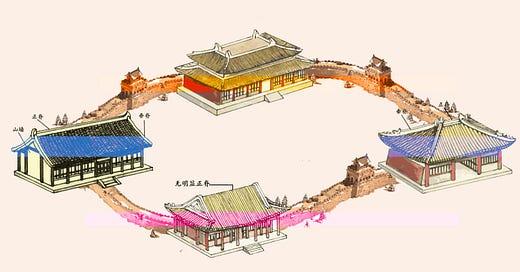Chinese homelessness & the stark reality of migrant worker living conditions
Is there homeless in China?
Yes. According to sources like HHS, The Economist, End Homelessness, The Borgen Project & many more.
Why do Chinese people claim otherwise?
Chinese people may claim there’s little to no homelessness due to state media and official reports often downplay homelessness, emphasizing poverty reduction (e.g., claiming “zero extreme poverty” by 2020) and showcasing urban development to project stability.
Many homeless, like migrant workers, are unregistered in cities and not counted as “local” homeless, creating a perception of lower homelessness rates.
Homelessness is stigmatized, and public discourse may avoid acknowledging it to maintain social harmony or national pride.
Aggressive policing and relocation of visible homeless populations to rural areas reduce street homelessness, reinforcing the belief it’s rare.
Many equate homelessness with street sleeping, overlooking “hidden homelessness” (e.g., migrant workers in slums), leading to underestimation.
In 2011, about 2.6 million people (0.18% of the population) were homeless. By 2014, this rose to around 3 million (0.21%).
By 2014, the Ministry of Civil Affairs estimated 3 million homeless, supported by 2,000 shelters and 20,000 social workers. Some sources, like a 2022 Lancet article, claim up to 300 million homeless, including migrant workers without urban hukou, living in overcrowded, unsanitary conditions.
Hukou is China’s household registration system, tying individuals to a specific location (rural or urban) and determining access to social services like healthcare, education, and welfare. Urban hukou grants better benefits, while rural hukou limits access in cities, affecting migrant workers’ rights and mobility. It reinforces urban-rural inequality and controls population movement.
China Labor Bulletin reveals approximately 60–70% of migrant workers in China lack urban hukou coverage in the cities where they work. As of 2020, only about 34% of the roughly 290 million migrant workers had obtained urban hukou or access to urban social services, leaving the majority without formal registration or associated benefits like healthcare, education, or welfare in urban areas.
Smaller cities have looser rules (e.g., Shijiazhuang’s “zero threshold” policy), while megacities like Beijing and Shanghai remain restrictive to control population growth. Rural migrants without advanced education or wealth rarely qualify, perpetuating their marginalization.
70% of all homeless people in China are migrant workers.
Though their visibility is much lower compared to many Western countries, according to People’s Dispatch, official estimates reported over 3 million homeless people in China around 2015, but recent numbers are believed to have decreased due to government interventions and social support systems.
The government operates shelters and relief stations in cities, and local authorities are tasked with assisting homeless individuals, often helping them return to their registered hometowns.
While street homelessness is less visible—especially in major cities—homeless people do exist, often staying in parks, under bridges, or in informal settlements, and are sometimes moved along by authorities
Overall it appears that there is a lot of misinformation regarding homelessness in China. But a cross examination of multiple sources reveals that the likely number is between 1-3 million, and that 70% are migrant workers, approximately 300 million. 90 million are covered by the hukou system. In some cases, qualifications are being relaxed, while in others, in bigger cities primarily they remain strict and over concentrated. Migrant workers are often found housed in informal settlements with substandard housing, underground rentals & dilapidated urban areas. The only way to end this inequality is to loosen the threshold for hukou eligibility more significantly so that a vast majority if not all migrant workers are covered. Otherwise China might find itself in a similar situation as the U.S.



